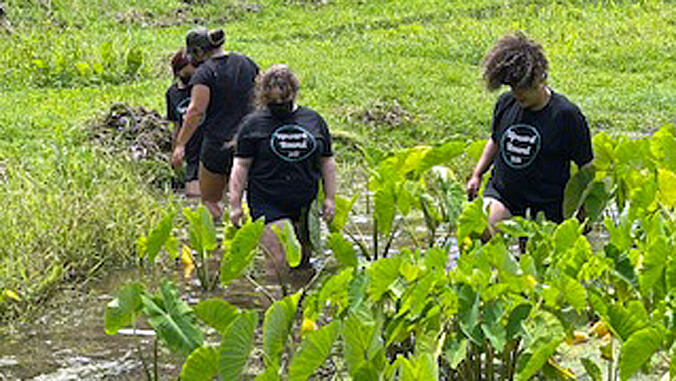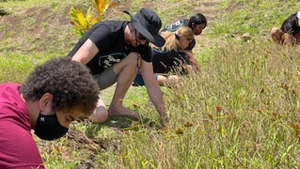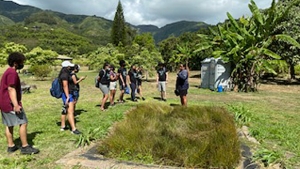
The National Science Foundation (NSF) has awarded a $2.4 million grant to the University of Hawaiʻi Maui College for a project called, “ʻĀINA IS: Advancing Informal Native ʻĀina-based Inspirations in STEM.” The new project expands the work of Project STEMulate in partnership with community-based organizations. Project STEMulate is a STEM (science, engineering, mathematics and technology) problem-based learning curriculum implemented at Upward Bound sites for underrepresented and low-income high school students.
Beginning in September and continuing over the next four years, six ʻāina-based community organizations—three on Maui and three on Oʻahu—will design the STEM problem-based learning process to incorporate a Native Hawaiian cultural lens. These ʻāina-based community organizations will then host Native Hawaiian youth (12 years and older) and their families in the STEM problem-based learning process to work on solution pathways to local environmental problems.
- Related UH News story: UH Maui College STEM education video featured in NSF showcase, May 5, 2020

“Through Project STEMulate, in collaboration with Upward Bound programs at UH Maui College, UH Hilo and Windward Community College, we have found a significant increase in STEM career interest, science self efficacy, and science motivation for students participating in the STEM problem-based learning model,” said Jaymee Nanasi Davis, Project STEMulate’s research coordinator and ʻĀINA IS program manager. “Our ʻāina-based community organizations give students a real-world problem to focus on. This is key to the project—that it comes from an organization doing awesome work and presents a problem it is currently working on. After the students learn more about the problem, they try to come up with solutions. ʻĀINA IS allows us to provide support, resources and training in STEM problem-based learning for our partners to continue their work in the community.”
Chancellor Lui Hokoana said, “We are at a critical crossroad. We must look for solutions to guarantee the future health and sustainability of our islands. This campus is committed to being a part of that work, and we believe this project helps to move our efforts forward.”
ʻĀina-based community organizations
The six organizations ʻĀINA IS will be working with are:
- Hōkūnui Maui (258 acres located on the face of Haleakalā, the East Maui volcano, focused on incorporating Native Hawaiian practices in regenerative agriculture and Native forestry)
- Paeloko Learning Center (Six acres on the inland community of Waiheʻe, Maui focuses on Hawaiian cultural environmental restoration, arts and language opportunities for community members)
- Hui O Waʻa Kaulua (housed on the shores of Lahaina, practices Hawaiian canoe building, wayfinding and voyaging)
- Mālama Learning Center (supports three cultural sites in the urban city of Kapolei, Oʻahu)
- Kualoa Education Center (4,000 acres located on the coastal
- Papahana Kuaola (63 acres in the Heʻeia watershed on Oʻahu, programming founded in Hawaiian knowledge, environmental restoration and sustainability)
community of Kualoa, Oʻahu, a nature preserve that provides outdoor and cultural experiences)
Next steps

“The next step is to gather with our ʻāina-based partners and together determine the path forward. How does the STEMulate process look through a cultural lens and how do we make it work on their sites?” Davis said. “From there we’ll have one or two of them test out STEM problem-based learning at their sites with youth and families. It could be a one-day workshop, an intersession camp where youth come in for a week and engage in problem-based learning, or a full summer camp. It will look different from site to site.”
Hōkūlani Holt is the director of Ka Hikina O Ka Lā and is involved with the Paeloko Learning Center, one of the participating ʻāina-based community organizations.
“This grant really brings together how we traditionally look at our world, particularly using problem based learning,” Holt said. “If there is a problem, everything is brought to bear to solve that problem, the knowledge that is ʻāina, that is human, that is the environment. And sometimes the answer is that there is no answer. We don’t know enough to fix it. But the process provides us with a way to move forward by continuing to learn. The role of the ʻāina-based community organizations is to provide the youth with the opportunity to explore critical thinking through problem based learning. And that’s what we need in our world.”

